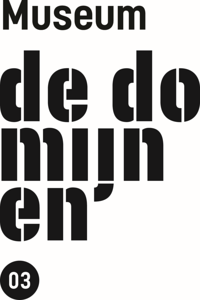Reading the River
November 29, 2015–February 21, 2016
Kapittelstraat 6
6131 ER Sittard
The Netherlands
Hours: Tuesday–Sunday 11am–5pm
T +31 46 451 3460
museum@dedomijnen.nl
“My art often involves facilitating and fostering connections—with rivers and with each other. We are water. Our bodies house streams: lymphs, bile, sweat, blood, mucus, urine. Water enters, circulates, leaves—individualized hydrologic cycles. Each of us is a walking ocean, sloshing down the hallway with damp saline innards held together by a paper-thin epidermis.”
–Basia Irland, 2007
The importance of water for all life on our planet is the point of departure for the work of the American artist Basia Irland (b. 1946, Ft. Smith, Arkansas). In her pioneering work of the past three decades, Irland focuses on rivers and watersheds, water scarcity, climate change, ecological restoration and waterborne diseases. Her sculptures, installations, photographs, National Geographic blog, and video documentaries have a strong participatory dimension. Through her poetic works, Irland hopes to reconnect people with their local waterways in order to foster commitment, care, appreciation, and responsibility. Reading the River is Irland’s first-ever museum solo exhibition in Europe, and this substantial retrospective offers a unique opportunity to become acquainted with the work of this visual artist, writer, activist and Professor Emerita of the Arts and Ecology program at the University of New Mexico.
A lifelong passion for books and water is the common thread that runs throughout Basia Irland’s consistent oeuvre. The objects she produces are often reliquaries of actions. They contain the memories of participatory projects dedicated to the mutual interconnectedness of people and all phenomena within the cosmos. Many works bear witness to a nomadic worldview with a deep understanding of different cultures. During international treks along rivers, the Gathering of Waters series originated as a way to reconnect a multitude of community groups with their local waterways and focus on collaborative and locally based actions encompassing an ethic of inclusion. These projects often result in portable Repositories, in which the knowledge and experience of waterways are assembled. Irland also created a series of Waterborne Disease Scrolls during stays in India, Nepal and Egypt, in which she brings attention to life-endangering diseases found in contaminated water. Since 2007, Irland has been making Ice Books: ephemeral, time-based sculptures carved from ice and embedded with a “text” consisting of local native seeds. The sculptures are placed into the stream; as they melt, the seeds are released and help contribute to the ecological restoration of riparian zones.
As a part of the exhibition, Irland made several new site-specific sculptures. In September 2015, she created a series of Ice Books that were launched into the River Maas near Born and into the Geleenbeek at Sweikhuizen. She also made a group of river Contemplation Stations that can be visited on location near Sittard during the exhibition. One of these Stations is sited within the museum. After dark, a video piece addressing climate change, entitled Below, can be seen in the windows on the front façade of the museum.
In conjunction with the exhibition Reading the River, a publication of the same name is being produced. In addition, Basia Irland has created a new limited-edition etching and aquatint, River Reverie, for Museum De Domijnen that is available for purchase at the museum.
For additional information, please contact:
Tessa Reijnders, press officer: tessa.reijnders [at] dedomijnen.nl / T +31 464205680
Roel Arkesteijn, exhibition curator: roel.arkesteijn [at] dedomijnen.nl / T +31 464513460



